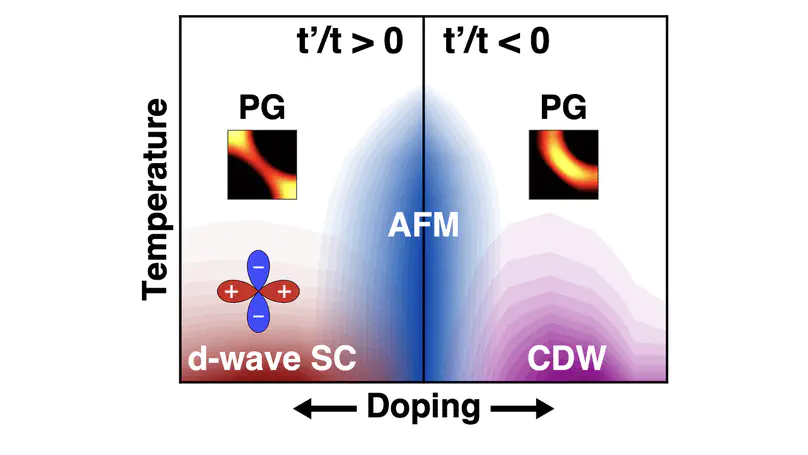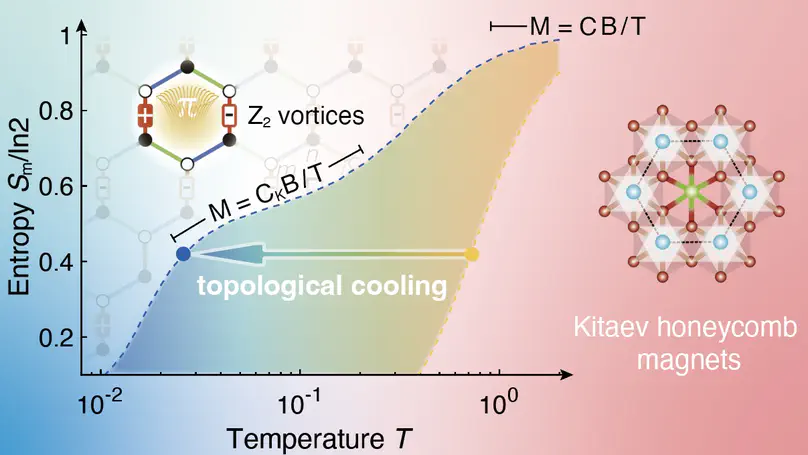Correlated Quantum Matter and Materials
Welcome to CQM2 Group!

Strong interactions among atomic particles can lead to materials, such as some high-temperature superconductors, with unusual electronic and magnetic properties. Our research group at ITP and BeihangU is focusing on emergent many-body physics and ultra quantum states of matter due to the intriguing interplay between correlation and topology. We aim to develop quantum many-body simulation techniques, e.g., tensor networks, renormalization group, and deep learning techniques, that provide reliable and accurate numerical access to thermal and dynamical properties of correlated systems. With state-of-the-art methods, we explore novel states of matter and reveal underlying manybody theory, in correlated materials that could possibily lead to intriguing applications in future quantum technology.

Research:
- Quantum Many-body Theory and Computations
- Ground-State and Thermal Tensor Networks
- Frustrated Magnetism and Quantum Spin Liquids
- Correlated Electrons and Superconductivity
- Magnetocaloric Quantum Materials
Projects:
- CAS Project for Young Scientists in Basic Research (Grant No. YSBR-057)
- Quantum Many-body Theory and Computation, NSFC Excellent Youngth Project: 12222412
- Thermal Tensor Networks for Frustrated Quantum Magnets, NSFC General Project: 11974036
- Quantum Manybody Computation Methods and Applications, NSFC Key Project: 11834014
- Non-abelian symmetry and tensor networks, NSFC Junior Project: 11504014
News
-
Our work “Spin Seebeck Effect of Triangular Lattice Spin Supersolid” is published in Phys. Rev. Lett. 135, 236504, 5-Dec-2025.
-
Our work “Quantum supercritical regime with universal magnetocaloric scaling in Ising magnets” is published in Nature Communications 16, 10646 (2025), 27-Nov-2025.
-
Our work “Giant magnetocaloric effect in spin supersolid candidate Na2BaCo(PO4)2'' Nature 625, 270–275 (2024) and “Bilayer t-J-J⊥ Model and Magnetically Mediated Pairing in the Pressurized Nickelate La3Ni2O7'' Phys. Rev. Lett. 132, 036502 are selected as Essential Science Indicators (ESI) highly cited papers.
-
自旋超固体与极低温制冷工作入选中国科学十大进展和两院院士评选的中国科技十大进展新闻.
-
Our work “Phase Diagram, d-Wave Superconductivity, and Pseudogap of the t-t'-J Model at Finite Temperature” is published in Phys. Rev. Lett. 133, 256003, 19-Dec-2024.
-
Our work “Double magnon-roton excitations in the triangular-lattice spin supersolid” is published in Phys. Rev. B 110, 214408, 4-Dec-2024.
-
Our work “Magnetocaloric effect of topological excitations in Kitaev magnets” is published in Nature Communications 15, 7011 (2024), 15-Aug-2024.
-
Our work “Orbital-selective superconductivity in the pressurized bilayer nickelate La3Ni2O7: An infinite projected entangled-pair state study ” is published in Phys. Rev. B 110, L041111, 8-Jul-2024.
-
Our work “Giant magnetocaloric effect in spin supersolid candidate Na2BaCo(PO4)2” is published in Nature 625, 270–275 (2024), 10-Jan-2024.
-
Our work “Bilayer t-J-J⊥ Model and Magnetically Mediated Pairing in the Pressurized Nickelate La3Ni2O7” is published in Phys. Rev. Lett. 132, 036502, 19-Jan-2024.
-
Our work “A one-third magnetization plateau phase as evidence for the Kitaev interaction in a honeycomb-lattice antiferromagnet” is published in Nature Physics 10, 1038 (2023) , 25-Sep-2023.
-
Our work “Plaquette Singlet Transition, Magnetic Barocaloric Effect, and Spin Supersolidity in the Shastry-Sutherland Model” is published in Phys. Rev. Lett. 131, 116702, 14-Sep-2023.
-
Our work “Possible intermediate quantum spin liquid phase in α-RuCl3 under high magnetic fields up to 100 T” is published in Nature Communications 14, 5613 (2023) , 12-Sep-2023.
-
Our work “Tangent Space Approach for Thermal Tensor Network Simulations of the 2D Hubbard Model” is published in Phys. Rev. Lett. 130, 226502, 01-June-2023, and also highlighted as PRL Editors' suggestion.
-
Our work “High-field quantum spin liquid transitions and angle-field phase diagram of the Kitaev magnet α−RuCl3” is published in Phys. Rev. B 107, 115124, 10-Mar-2023.
-
We are very happy to announce that Dr. Han Li has been awarded the KITS fellowship for postdoctoral researchers!
-
Congratulations to Han Li for being awarded the fellowship of 2022 China National Postdoctoral Program for Innovative Talents (全国博新计划). Grant No. BX20220291.
-
Congratulations to Junsen Wang for the support from the Fundamental Research Funds for the Central Universities.
-
Our work “Exciton Proliferation and Fate of the Topological Mott Insulator in a Twisted Bilayer Graphene Lattice Model"is published in Phys. Rev. Lett 128, 157201, 12-Apr-2022.
-
Our work “Realization of topological Mott insulator in a twisted bilayer graphene lattice model” is published in Nature Communications 12, 5480 (2021) , 16-Sep-2021.
-
Our work “Learning the Effective Spin Hamiltonian of a Quantum Magnet” is published in Chin. Phys. Lett 38, 097502, 27-Aug-2021. Our code implementation in PyTorch is publicly available at this GitHub repo.
-
Our work “Identification of magnetic interactions and high-field quantum spin liquid in α-RuCl3” is published in Nature Communications 12, 4007 (2021) , 29-Jun-2021.
-
Our work “Symmetry-Protected Topological Edge Modes and Emergent Partial Time-Reversal Symmetry Breaking in Open Quantum Many-Body Systems"is published in Phys. Rev. Lett 126, 237201, 9-Jun-2021.
-
Our work “Evidence of the Berezinskii-Kosterlitz-Thouless phase in a frustrated magnet” is published in Nature Communications 11, 5631 (2020) , 06-Nov-2020, and also selected as Editor’s Highlight !
-
Our work “Kosterlitz-Thouless Melting of Magnetic Order in the Triangular Quantum Ising Material TmMgGaO4” is published in Nature Communications 11, 1111 (2020) , 28-Feb-2020.
-
Our work “Exponential Thermal Tensor Network Approach for Quantum Lattice Models” is published in Phys. Rev. X 8, 031082, 26-Sep-2018.
Featured

TmMgGaO4 is one of a number of recently-synthesized quantum magnets that are proposed to realize important theoretical models. Here the authors demonstrate the agreement between detailed experimental measurements and state-of-the-art predictions based on the 2D transverse field triangular lattice Ising model.

The anomalous thermodynamic properties of the paradigmatic frustrated spin-1/2 triangular-lattice Heisenberg antiferromagnet (TLH) has remained an open topic of research over decades, both experimentally and theoretically. Here, we further the theoretical understanding based on the recently developed, powerful exponential tensor renormalization group method on cylinders and stripes in a quasi-one-dimensional (1D) setup, as well as a tensor product operator approach directly in 2D.

























